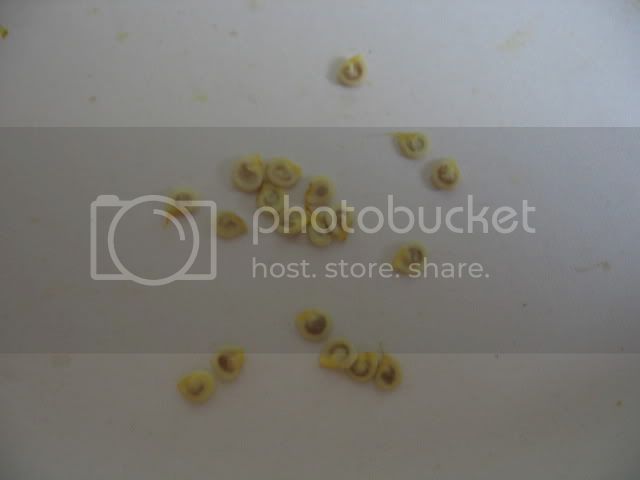.... is the one not asked. So here goes...
Frequently when deseeding pods, I'll notice at least a few seeds that are dark inside. Not dark at all on the outside, but just on the inside. So I generally don't think this is mold, but not really knowing why they are that way, and knowing that most seeds aren't like that, I just pitch them. But as I was deseeding a pod earlier, I started thinking that I really don't know that the seeds are necessarily bad - could be that they would germinate just fine and grow into healthy plants just like the white-centered seeds. Maybe. Maybe not. But could it just be that some are darker than others genetically, and this doesn't translate into anything more than a color difference, like people? Or is it, as I have suspected, indication of something not particularly good?
Frequently when deseeding pods, I'll notice at least a few seeds that are dark inside. Not dark at all on the outside, but just on the inside. So I generally don't think this is mold, but not really knowing why they are that way, and knowing that most seeds aren't like that, I just pitch them. But as I was deseeding a pod earlier, I started thinking that I really don't know that the seeds are necessarily bad - could be that they would germinate just fine and grow into healthy plants just like the white-centered seeds. Maybe. Maybe not. But could it just be that some are darker than others genetically, and this doesn't translate into anything more than a color difference, like people? Or is it, as I have suspected, indication of something not particularly good?

